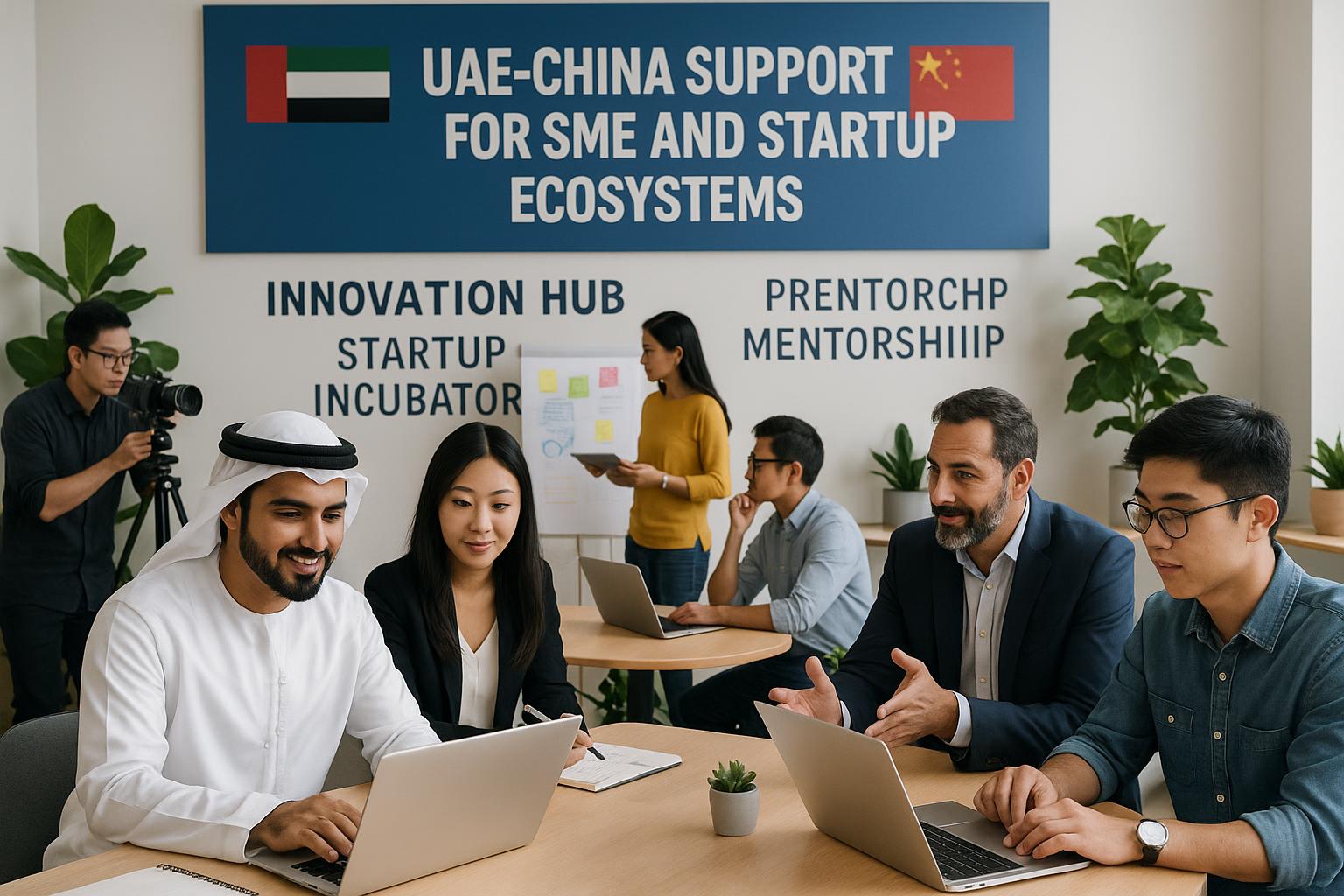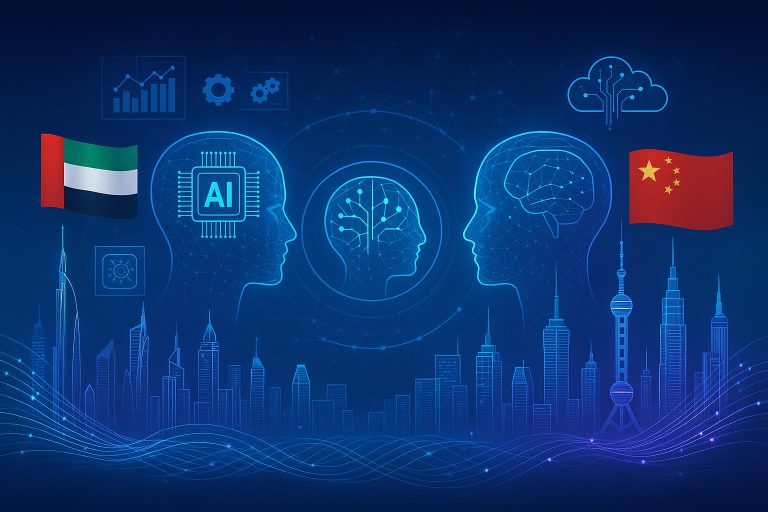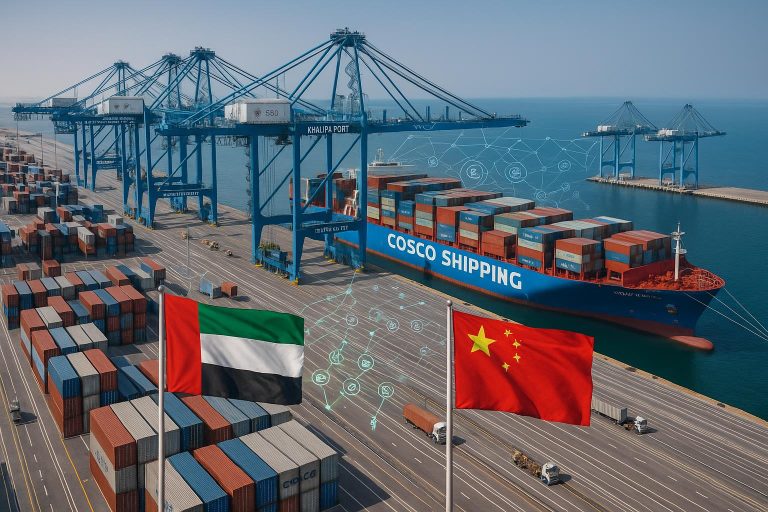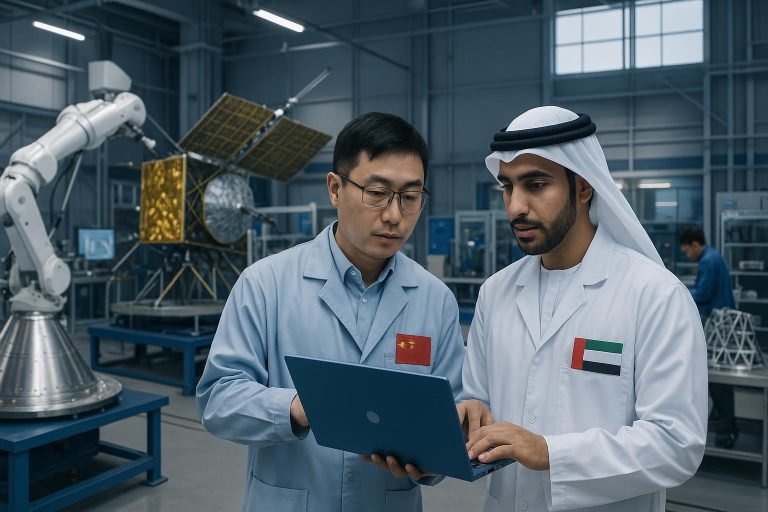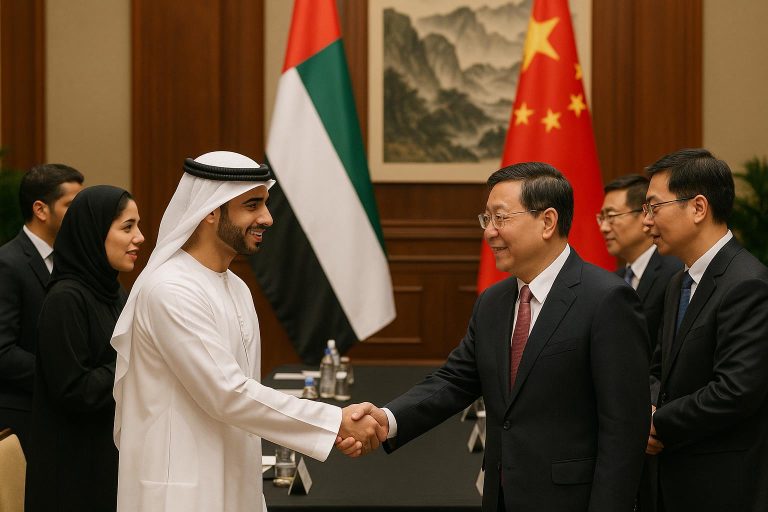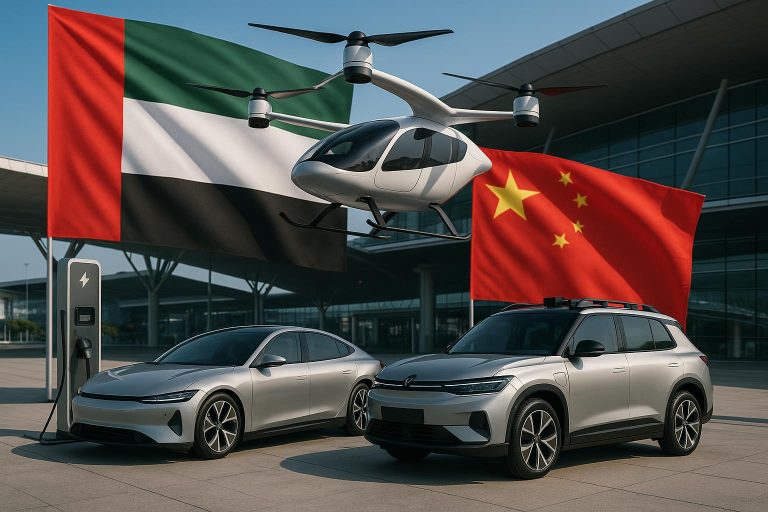Fostering the Next Generation of Innovators: A Look at Joint UAE-China Support for SME and Startup Ecosystems.
Executive Summary
The strategic partnership between the United Arab Emirates (UAE) and China has evolved significantly, marked by robust bilateral trade reaching a record $101.8 billion in 2024 and substantial UAE investments in China, which surged by 96% to $4.5 billion by the end of 2023. This deepening relationship, formalized by a comprehensive strategic partnership in 2018, extends beyond traditional trade to encompass critical sectors such as technology, clean energy, infrastructure, and finance. A pivotal aspect of this collaboration is the joint commitment to nurturing Small and Medium-sized Enterprises (SMEs) and startup ecosystems. Both nations recognize the vital role of innovation and entrepreneurship in economic diversification and sustainable growth. This article explores the current landscape of UAE-China cooperation in supporting these dynamic sectors, identifying strategic growth drivers and emerging opportunities. It also critically examines the challenges inherent in cross-cultural and cross-border innovation initiatives, offering a case study spotlight and forward-looking recommendations to further strengthen this crucial partnership for the next generation of innovators.
Introduction
The relationship between the United Arab Emirates (UAE) and the People’s Republic of China has transcended traditional diplomatic ties to forge a comprehensive strategic partnership, characterized by burgeoning economic cooperation and a shared vision for global development. This partnership, solidified in 2018, has seen bilateral trade soar to unprecedented levels, reaching a remarkable $101.8 billion in 2024, an astounding 800-fold increase since 1984. The UAE has emerged as China’s largest export market in the Middle East and its second-largest trading partner in the region, while China consistently holds its position as the UAE’s foremost trading partner. This robust economic interdependence is further underscored by significant investment flows, with UAE investments in China escalating to $4.5 billion by the end of 2023, marking a 96% increase from the previous year. Beyond these impressive figures, the strategic alignment between the two nations is increasingly focused on fostering innovation and supporting the vibrant ecosystems of Small and Medium-sized Enterprises (SMEs) and startups. This article delves into the multifaceted dimensions of this joint endeavor, exploring how the UAE and China are collaboratively nurturing the next generation of innovators, examining the opportunities, challenges, and strategic pathways for sustained growth in this critical domain.
The Current Landscape of Bilateral Cooperation
The bilateral relationship between the UAE and China has matured into a robust comprehensive strategic partnership, formally established in 2018. This framework provides the bedrock for extensive collaboration across diverse sectors, moving beyond traditional trade to encompass strategic economic and technological alignment. The formation of the UAE-China Investment and Economic Cooperation Working Group exemplifies the institutional commitment to fostering deeper ties, supported by regular high-level diplomatic engagements and strategic agreements that continually reinforce this alliance.
Economically, the scale of cooperation is impressive. Bilateral trade volume reached an unprecedented $101.8 billion in 2024, representing an extraordinary 800-fold increase since 1984. The UAE stands as China’s largest export market in the Middle East and its second-largest trading partner in the region, while China consistently remains the UAE’s largest trading partner. This commercial synergy is further amplified by a significant Chinese business presence in the UAE, with over 15,000 Chinese firms now operating within its borders. Concurrently, UAE investments in China have seen a dramatic surge, reaching $4.5 billion by the end of 2023, a 96% increase from the previous year, signaling growing confidence and mutual economic integration.
Cooperation spans several critical sectors, reflecting both nations’ strategic priorities. In Energy & Clean Energy, joint ventures in solar and wind power are prominent, highlighted by the Masdar-China Silk Road Fund MoU for renewable energy projects within Belt and Road Initiative (BRI) countries. Infrastructure & Logistics remain a cornerstone, with projects like the COSCO terminal at Khalifa Port and the China-UAE Industrial Capacity Zone solidifying the UAE’s role as China’s gateway to the Gulf. The Technology & AI sector is witnessing accelerated collaboration through technology cooperation agreements and digital transformation initiatives, with a notable $5 billion partnership for AI, renewable energy, and infrastructure. Trade & Free Zones continue to thrive, with JAFZA and DP World forging partnerships with Chinese counterparts, leveraging Dubai’s strategic location.
Recent developments in 2024-2025 underscore the dynamic nature of this partnership. Numerous MoUs have been signed across various chambers and organizations, complemented by frequent high-level visits and diplomatic engagements. A significant focus has been placed on new economy sectors, entrepreneurship, tourism, and aviation, signaling a forward-looking agenda. Geographically, Abu Dhabi serves as a primary investment hub, while Dubai plays a crucial role in trade facilitation, with free zone partnerships extending across all emirates.
Beyond these, additional key cooperation sectors are emerging. Healthcare & Pharmaceuticals see investments like Mubadala’s acquisition of UCB Pharma’s mature business in China and broader partnerships in medical technology. Agriculture & Food Security are being addressed through agreements and projects such as the $33 million smart agricultural initiative between Silal and China’s Shouguang Vegetable Group. Aviation & Transportation are expanding with Emirates and Air China MoUs and a $1 billion deal for 350 flying taxis. Logistics & Supply Chain are being enhanced by JINGDONG Property’s Middle East logistics hub and JD.com’s smart supply chain technologies. In Financial Services & Fintech, cross-border payment cooperation between China’s CIPS and the UAE central bank, alongside fintech partnerships in Abu Dhabi, are facilitating investment and trade. These diverse and deepening engagements illustrate a comprehensive and strategically aligned bilateral cooperation landscape, setting the stage for fostering innovation and supporting nascent enterprises.
Opportunities and Strategic Growth Drivers
The deepening UAE-China strategic partnership presents a fertile ground for fostering innovation and driving the growth of Small and Medium-sized Enterprises (SMEs) and startup ecosystems in both nations. Several key opportunities and strategic growth drivers underpin this collaborative endeavor.
Firstly, the significant investments in Technology & AI serve as a primary catalyst. The $5 billion partnership between the UAE and China in AI, renewable energy, and infrastructure creates a robust ecosystem for tech startups. Initiatives like Digital Dubai exploring AI and smart city technologies in Shenzhen, and G42’s strategic positioning, highlight a mutual commitment to leveraging advanced technologies. This collaboration provides startups with access to cutting-edge research, development resources, and a vast market for innovative solutions, particularly in areas like smart cities, fintech, and digital transformation. The presence of over 15,000 Chinese firms in the UAE also facilitates knowledge transfer and potential partnerships for local startups.
Secondly, the focus on Clean Energy offers substantial opportunities. With joint investments in solar and wind power, and the Masdar-China Silk Road Fund MoU for renewable energy projects, there is a clear pathway for SMEs and startups specializing in sustainable technologies. This includes innovations in energy storage, smart grids, and renewable energy solutions, aligning with global sustainability goals and national diversification strategies. The UAE’s ambitious clean energy targets, coupled with China’s technological prowess, create a powerful synergy for green tech innovators.
Thirdly, the robust Infrastructure & Logistics backbone, exemplified by projects like the COSCO terminal at Khalifa Port and the China-UAE Industrial Capacity Zone, positions the UAE as a critical hub for China’s Belt and Road Initiative (BRI). This strategic geographical advantage, combined with advancements in logistics and supply chain technologies, such as JINGDONG Property’s Middle East logistics hub and JD.com’s smart supply chain implementation, creates immense opportunities for logistics tech startups, e-commerce enablers, and businesses focused on optimizing cross-border trade flows. The UAE’s role as China’s Gulf gateway provides unparalleled market access for innovative logistics solutions.
Fourthly, the burgeoning Financial Services & Fintech sector is a significant growth driver. Cross-border payment cooperation between China’s CIPS and the UAE central bank, along with fintech partnerships in Abu Dhabi, are streamlining financial transactions and fostering innovation in digital payments, blockchain, and financial inclusion. The launch of ETF initiatives and cross-border payment connectivity programs for the MENA region further integrate financial markets, offering fintech startups in both countries a broader operational landscape and access to capital.
Moreover, the expansion into Healthcare & Pharmaceuticals and Agriculture & Food Security sectors opens new avenues for innovation. Investments in medical technology, pharmaceutical partnerships, and smart agricultural projects like the $33 million initiative between Silal and China’s Shouguang Vegetable Group, create demand for specialized startups. These areas require innovative solutions in biotech, medical devices, hydroponics, and modern agriculture technologies, providing a fertile ground for entrepreneurial ventures to address critical societal needs.
Finally, the strategic partnership framework itself, characterized by regular high-level dialogues and the UAE-China Investment and Economic Cooperation Working Group, provides a stable and supportive environment for business growth. This institutional backing, coupled with the UAE’s role as a regional economic powerhouse and China’s global economic influence, ensures that SMEs and startups benefit from policy support, investment facilitation, and market access. The mutual commitment to economic diversification and innovation acts as a powerful strategic growth driver, encouraging the development of a vibrant, interconnected entrepreneurial ecosystem.
Challenges and Critical Considerations
While the UAE-China partnership offers substantial opportunities for fostering innovation and supporting SME and startup ecosystems, it is imperative to acknowledge and critically consider the inherent challenges. Navigating these complexities is crucial for ensuring the sustained and equitable growth of these collaborative ventures.
One significant challenge lies in cross-cultural differences and communication barriers. Both the UAE and China possess distinct business cultures, regulatory environments, and communication styles. For SMEs and startups, which often have limited resources, understanding and adapting to these nuances can be particularly demanding. Differences in legal frameworks, intellectual property protection mechanisms, and corporate governance practices require careful navigation to ensure compliance and mitigate risks. Bridging these cultural and operational gaps necessitates dedicated efforts in cultural intelligence, localized support services, and clear communication protocols.
Another critical consideration is market access and competitive dynamics. While the UAE offers a strategic gateway to the Middle East and Africa, and China presents an immense domestic market, gaining effective entry and establishing a competitive foothold can be arduous. Chinese startups entering the UAE market may face competition from established local and international players, while UAE startups seeking to penetrate China must contend with a highly competitive and rapidly evolving landscape, often dominated by large domestic tech giants. Understanding consumer preferences, distribution channels, and regulatory requirements in each market is paramount, requiring tailored strategies and significant investment.
Furthermore, despite the overall increase in bilateral investment, funding and investment gaps can still pose challenges for specific SMEs and early-stage startups. While large-scale infrastructure and technology projects attract substantial capital, smaller ventures may struggle to secure adequate seed funding or Series A investments that align with their growth trajectories. The investment landscape, while maturing, may still require more specialized funds and incubators focused on cross-border SME and startup development, as well as clearer pathways for venture capital deployment across jurisdictions.
Talent acquisition and retention also present a critical consideration. Both the UAE and China are vying for top global talent in technology and innovation. For joint ventures and startups, attracting and retaining skilled professionals who possess both technical expertise and cross-cultural competencies is vital. This includes individuals proficient in both Arabic/English and Mandarin, and those with a deep understanding of both regional markets. Developing robust talent pipelines, offering competitive incentives, and fostering inclusive work environments are essential to overcome this challenge.
Finally, geopolitical factors and evolving global trade dynamics introduce an element of uncertainty. While the UAE and China maintain a strong strategic partnership, the broader international political and economic landscape can influence bilateral relations and investment flows. Startups and SMEs operating in this space must remain agile and adaptable to potential shifts in policy, trade agreements, or global economic conditions. A proactive approach to risk assessment and strategic planning is necessary to build resilience against external pressures.
Addressing these challenges effectively will require continuous dialogue, policy harmonization, targeted support programs, and a commitment to fostering an environment of mutual understanding and trust. By proactively tackling these critical considerations, the UAE and China can further solidify their joint efforts in nurturing a thriving ecosystem for the next generation of innovators.
Case Study Spotlight
An exemplary illustration of joint UAE-China support for innovation within the SME and startup ecosystem is the collaboration between Silal, Abu Dhabi’s new fresh produce and agri-tech company, and China’s Shouguang Vegetable Group (SVG). This partnership has culminated in a $33 million smart agricultural project, demonstrating a tangible commitment to advancing food security and agricultural technology through bilateral cooperation.
This initiative focuses on developing advanced farming techniques, including hydroponics, organic farming, and modern agriculture technologies. Specifically, China’s SVG is investing over AED 120 million (approximately $32.7 million USD) in a 100,000m² Agritech facility in Al Ain. This significant investment and technological transfer are designed to enhance local food production capabilities, reduce reliance on imports, and introduce cutting-edge agricultural practices to the UAE. The project not only brings Chinese expertise and capital but also creates a platform for local talent development and the potential for spin-off innovations in agri-tech.
The collaboration with Silal, a company dedicated to diversifying food sources and supporting local farmers, highlights how large-scale international partnerships can directly benefit and stimulate local SME growth within a critical sector. By establishing advanced facilities and sharing knowledge, this project acts as an incubator for new ideas and technologies, providing opportunities for local startups to integrate into the value chain, develop specialized solutions, and contribute to the UAE’s food security agenda. It embodies the spirit of fostering innovation by combining strategic investment with technological advancement, creating a sustainable model for future bilateral ventures in emerging sectors.
Future Outlook and Strategic Recommendations
The future of UAE-China collaboration in fostering SME and startup ecosystems is poised for significant growth, driven by shared economic diversification goals and a mutual commitment to innovation. To fully capitalize on this potential and navigate existing challenges, several strategic recommendations can be put forth.
Firstly, enhance policy harmonization and regulatory alignment. Both nations should continue to work towards streamlining cross-border investment regulations, intellectual property protection frameworks, and business registration processes. This would significantly reduce friction for SMEs and startups looking to expand into the partner market, fostering a more predictable and supportive environment. The UAE-China Investment and Economic Cooperation Working Group can play a pivotal role in this ongoing dialogue.
Secondly, establish specialized cross-border incubation and acceleration programs. Creating dedicated programs that offer mentorship, market entry support, and access to funding tailored for UAE and Chinese startups would be invaluable. These programs could focus on key sectors identified for cooperation, such as AI, clean energy, fintech, and agri-tech, providing startups with the necessary resources to scale internationally. This includes facilitating exchange programs for entrepreneurs and innovators.
Thirdly, develop joint innovation funds and venture capital initiatives. While investments are growing, targeted funds specifically designed to support early-stage and growth-stage SMEs and startups in strategic sectors would bridge existing funding gaps. These funds could be co-managed by UAE and Chinese entities, leveraging local market insights and global investment expertise. This would also encourage more private sector participation in cross-border innovation.
Fourthly, invest in talent development and cultural exchange programs. To overcome cultural and communication barriers, both countries should promote educational and professional exchange programs. This includes language training, cultural immersion initiatives, and joint research and development projects involving universities and research institutions. Developing a pool of bilingually and biculturally competent professionals is crucial for sustained collaboration.
Finally, leverage digital platforms for market access and collaboration. Utilizing digital platforms to connect SMEs and startups with potential partners, investors, and customers in both markets can significantly lower entry barriers. This could involve virtual trade fairs, online B2B matching platforms, and digital marketplaces that showcase innovative products and services from both the UAE and China. By implementing these recommendations, the UAE and China can solidify their position as global leaders in fostering a dynamic and interconnected innovation ecosystem for the next generation.
Conclusion
The strategic partnership between the UAE and China has evolved into a powerful engine for economic growth and innovation, with a particular emphasis on nurturing Small and Medium-sized Enterprises (SMEs) and startup ecosystems. The remarkable growth in bilateral trade and investment, coupled with extensive cooperation across critical sectors like technology, clean energy, and finance, underscores a shared commitment to future-oriented development. While opportunities abound, particularly in leveraging advanced technologies and strategic geographical advantages, addressing challenges such as cross-cultural differences, market access complexities, and talent acquisition remains crucial. By implementing strategic recommendations—including policy harmonization, specialized incubation programs, joint innovation funds, and talent development—both nations can further solidify their collaborative efforts. This dynamic partnership is not merely about economic exchange; it is about collectively fostering the next generation of innovators, ensuring sustainable growth, and creating a vibrant, interconnected entrepreneurial landscape that benefits both the UAE and China.
References
[1] All statistical data, strategic partnership details, key cooperation sectors, recent developments, geographic focus areas, and additional key cooperation sectors mentioned in this article are derived from the provided ‘UAE-China Bilateral Investment Research Findings’ document.

